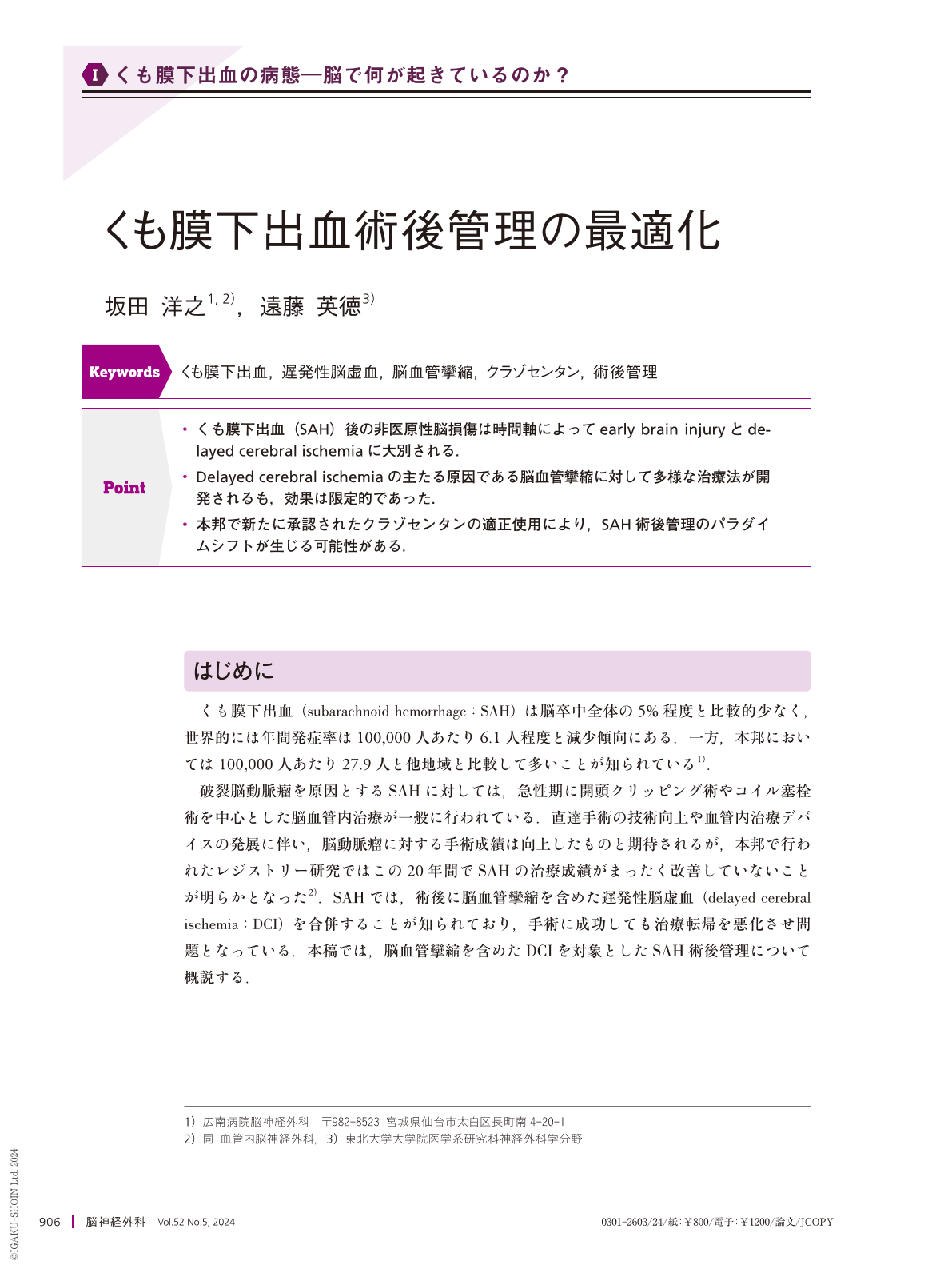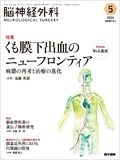Japanese
English
- 有料閲覧
- Abstract 文献概要
- 1ページ目 Look Inside
- 参考文献 Reference
Point
・くも膜下出血(SAH)後の非医原性脳損傷は時間軸によってearly brain injuryとdelayed cerebral ischemiaに大別される.
・Delayed cerebral ischemiaの主たる原因である脳血管攣縮に対して多様な治療法が開発されるも,効果は限定的であった.
・本邦で新たに承認されたクラゾセンタンの適正使用により,SAH術後管理のパラダイムシフトが生じる可能性がある.
Delayed cerebral ischemia(DCI)is one of the most significant complications of subarachnoid hemorrhage. Despite significant evolution in understanding DCI pathophysiology, vasospasm affecting cerebral vessels of large and moderate diameters remain the only clinically measurable component of DCI and is therefore the primary target for intervention in the postoperative management of subarachnoid hemorrhage. In Japan, fasudil hydrochloride and ozagrel sodium are widely used to prevent vasospasms; however, their effects are sometimes insufficient. Clazosentan, a selective endothelin receptor subtype A antagonist, reduces vasospasm-related morbidity and all-cause mortality following aneurysmal subarachnoid hemorrhage. This was demonstrated in a recent randomized phase 3 trial, leading to the approval of clazosentan by the Pharmaceuticals and Medical Devices Agency in Japan. Recent advances in our understanding of subarachnoid hemorrhage will facilitate improved management to reduce the incidence of DCI.

Copyright © 2024, Igaku-Shoin Ltd. All rights reserved.


